You may know Repixel8 as the indie developer behind Formula Retro Racing World Tour, a homage to early flat-shaded 3d racers like Virtua Racing. However, the solo developer also has a penchant for futuristic racers, with previous releases such as Velocity G and Gravity Chase.
Neon Apex: Beyond the Limit is its latest attempt to recapture the spirit of retired futuristic racers like Extreme-G and F-Zero, combining inspiration from anime series such as Speed Racer and Akira.
Whereas Formula Retro Racing featured a roster of single-seaters and touring cars, Neon Apex embraces its futuristic setting with a roster of wacky vehicles, ranging from armoured tank-like cars to high-tech, Akira-style bikes and hover vehicles.
Speed racer
Neon Apex gets the fundamentals right. The racing is fast and frenetic, with a terrific sense of speed, particularly when passing through boost pads and activating nitro boosts. This would be redundant if the vehicles handled like bricks, but they feel smooth and snappy to drive, with tight controls that make careening around corners and at eye-watering speeds extremely satisfying.
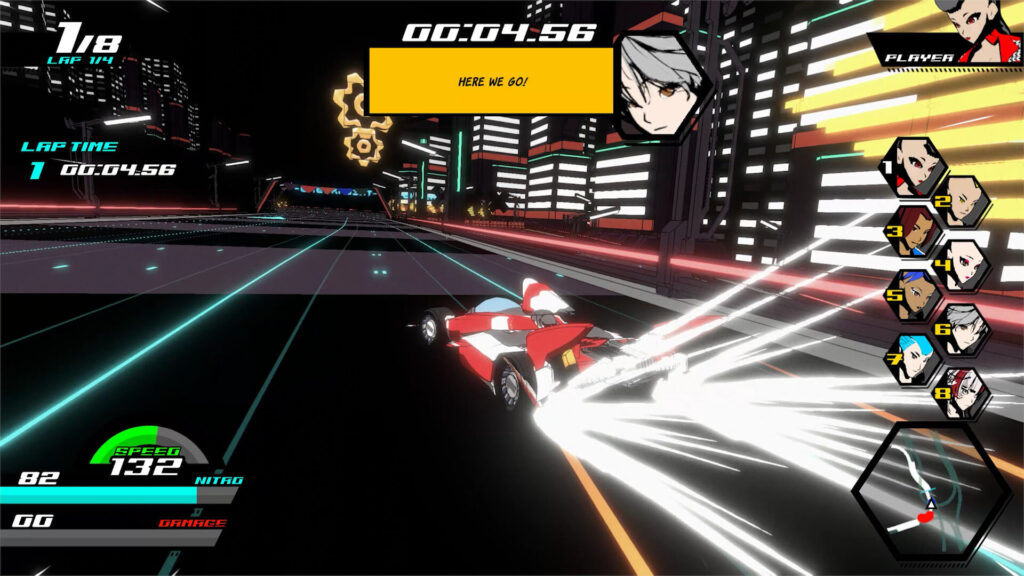
Despite the approachable vehicle handling, racing at these breakneck speeds requires skill. Vehicles take damage if you continuously slam into walls, eventually exploding if your damage meter reaches maximum.
You soon learn that the best way to avoid this is to slide around corners as often as possible using the dedicated drift button. Like in Formula Retro Racing, drifting is automatic as you hold the button down and turn into a corner. You don’t need to counter-steer to control the slide, which helps maintain the game’s blisteringly fast pace.
Resetting from a fiery crash costs precious time, and it’s often difficult to catch up. Sustained damage also carries over in career races, but can be fixed if you buy a repair.
A thumping electronic soundtrack amplifies the intensity, but the same can’t be said for the weak audio – the vehicles sound like dentist drills.
A visual spectacle
Visually, Neon Apex looks striking thanks to its cel-shaded, anime-inspired art style. It’s an acquired taste, but this distinctive look helps set it apart.
This is combined with a visual spectacle of speed lines, headlight trails, sparks, and coloured boosts, but the excessive number of visual effects filling the screen can become disorienting. Abrupt camera cuts when activating nitro boosts can also distract you from the flow of the race.
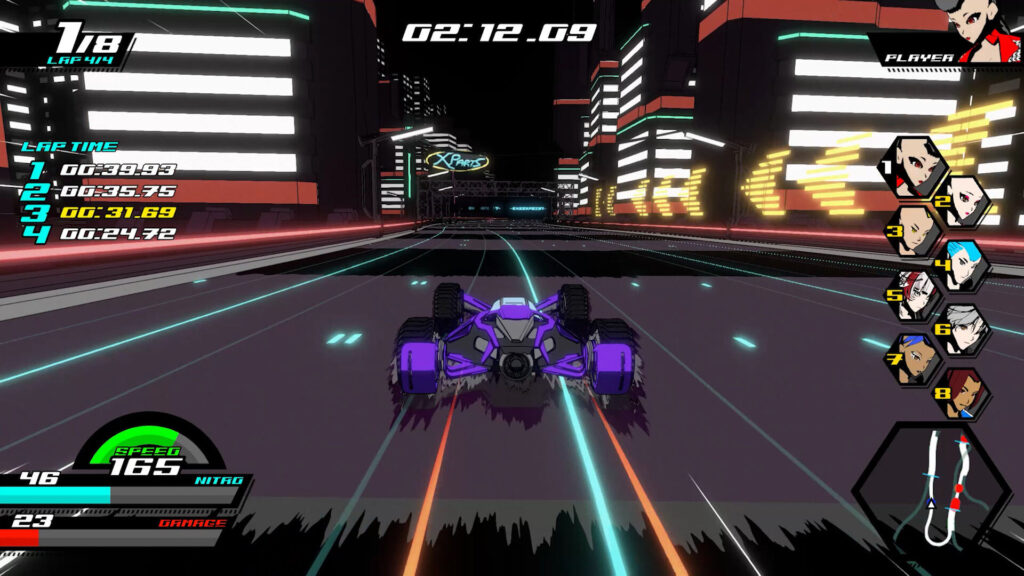
Races take place on neon-lit night-time highways with traffic to avoid, like a futuristic Tokyo Xtreme Racer. As a result, there’s little variety, with every circuit taking place at night on wide layouts. Trackside scenery also gets repetitive, with bland-looking buildings and repeated tree assets surrounding the locations.
The variety of events helps offset this repetition. A lengthy career mode sees you progress through different levels and acquire cards to unlock new vehicles, which can also be customised with performance and strength upgrades from race winnings.
Alongside standard races, events range from head-to-head versus races to point-to-point sprints, to takedowns where you must take out a speeding target vehicle, Chase HQ-style. Combined with the card system for unlocking and upgrading vehicles, the career mode has enough variety to keep you engaged.
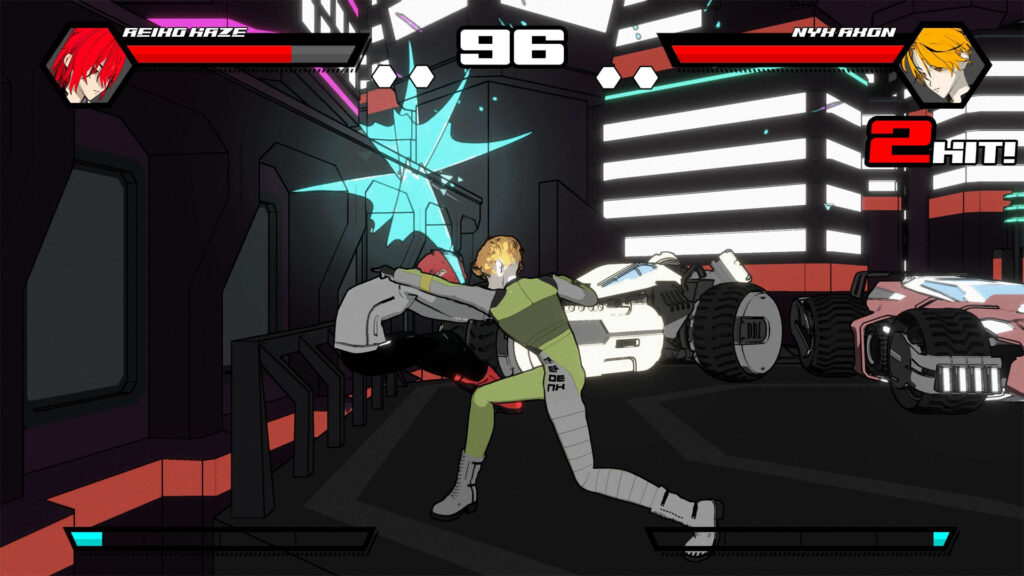
Bizarrely, there are also bonus events that turn Neon Apex into a genre-bending beat ’em up. We were expecting these ‘fight’ events to be Road Rash-style combat races, so you can imagine our surprise when we found ourselves in an actual fight between two drivers outside vehicles.
It’s an unexpected side mode, though the controls feel stiff and the blocking, punching and kicking attacks are basic. Oddly, you can also only move your character with the d-pad.
Cyber racing
Career events require XP credits to enter, which can be earned in a separate championship mode featuring multiple cups with a points system, as well as a multi-chapter story presented in manga-style cutscenes. Unlike career events, a first-place finish is required to progress the story.
Each character has a unique backstory, with a mix of human competitors and cybernetically enhanced androids competing in a story that ventures into science fiction territory.
Unfortunately, the story falls flat, with uninspired character designs and overly long, text-driven cutscenes. The sci-fi premise could also have been explored further with vehicle weapons and combat, although this might have made the high-speed races too chaotic.
While performance is generally smooth, we encountered some temporary freezes during story mode events that can hopefully be resolved through a patch.
Sadly, there is no online multiplayer, a common limitation in smaller indie racers; however, you can compare times with other players on a global leaderboard or race locally in split-screen multiplayer.
Neon Apex is a fun and fast-paced futuristic racer that boasts a superb sense of speed, intuitive controls, and a lengthy career mode with a good variety of events. However, its cel-shaded presentation and overabundance of visual effects may not appeal to everyone, and the re-used environments make for a repetitive experience.
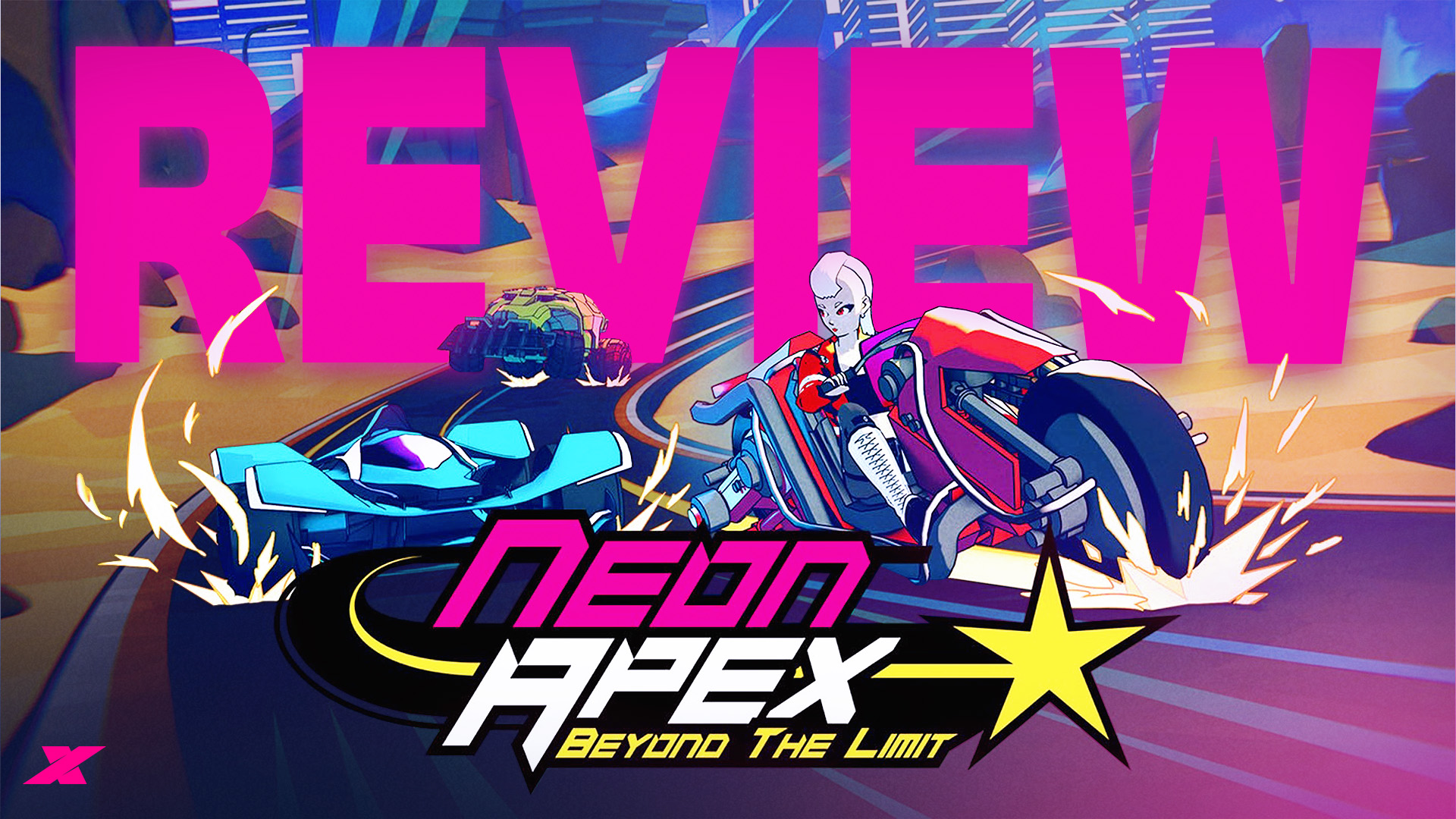
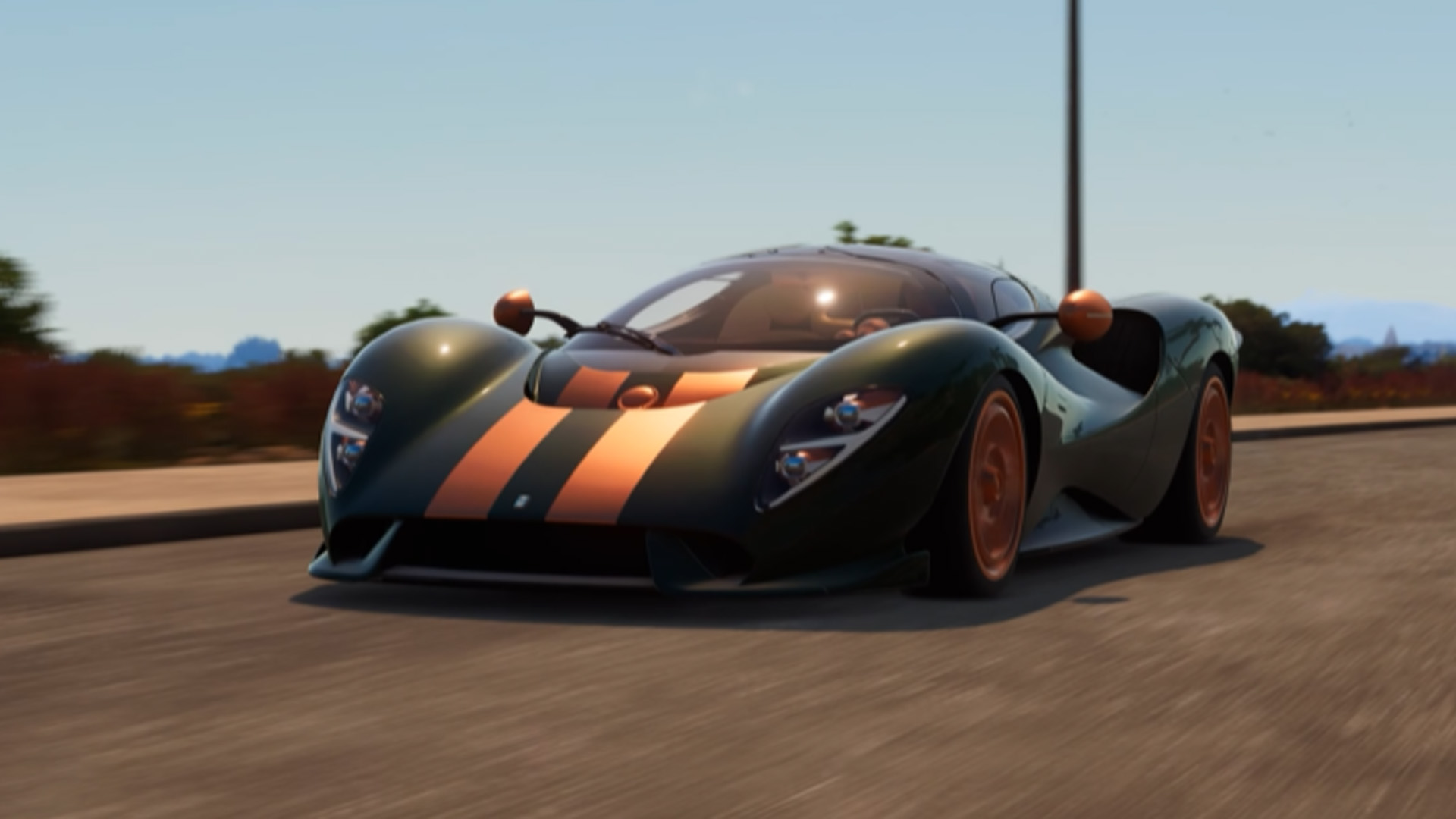
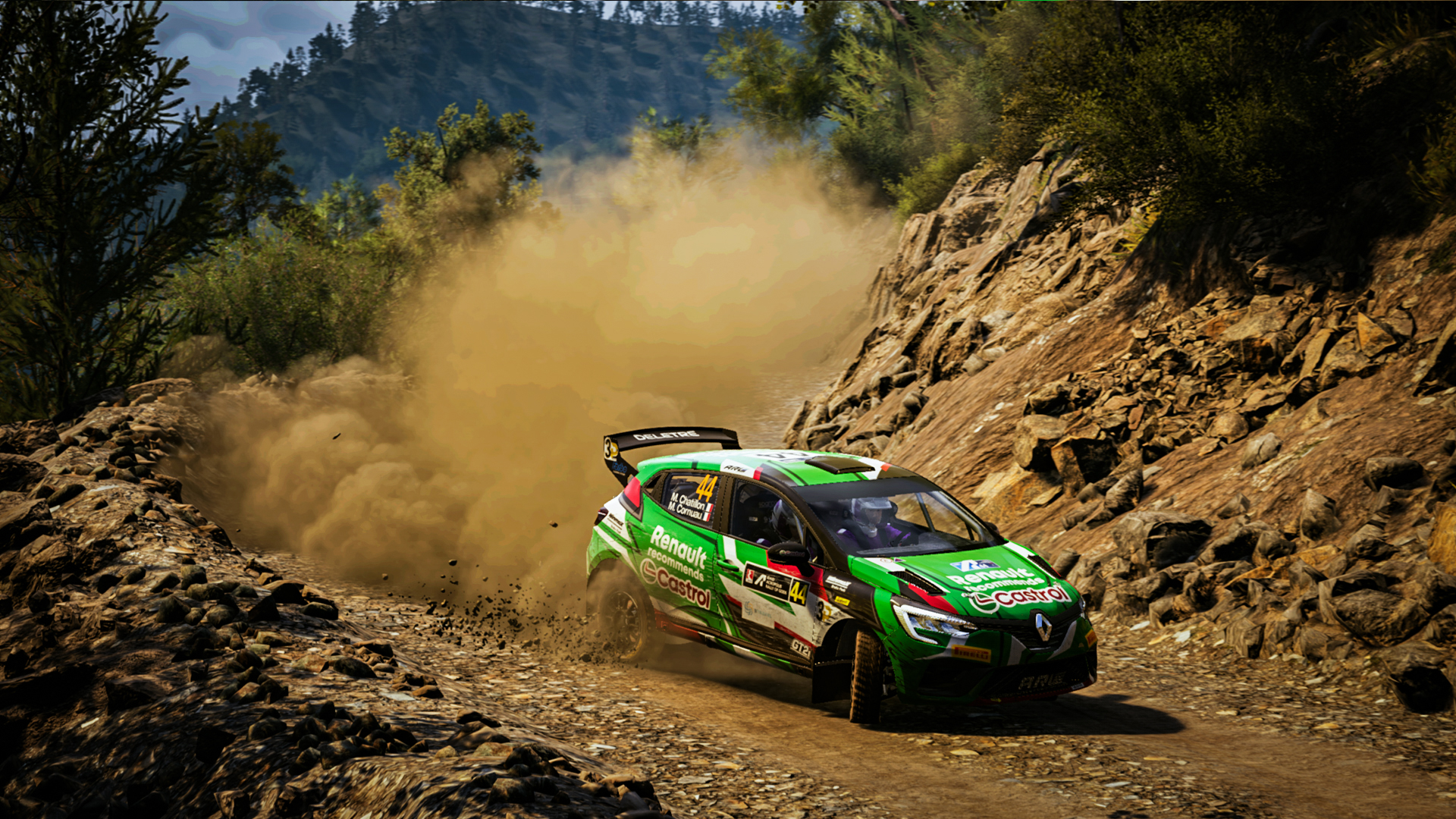

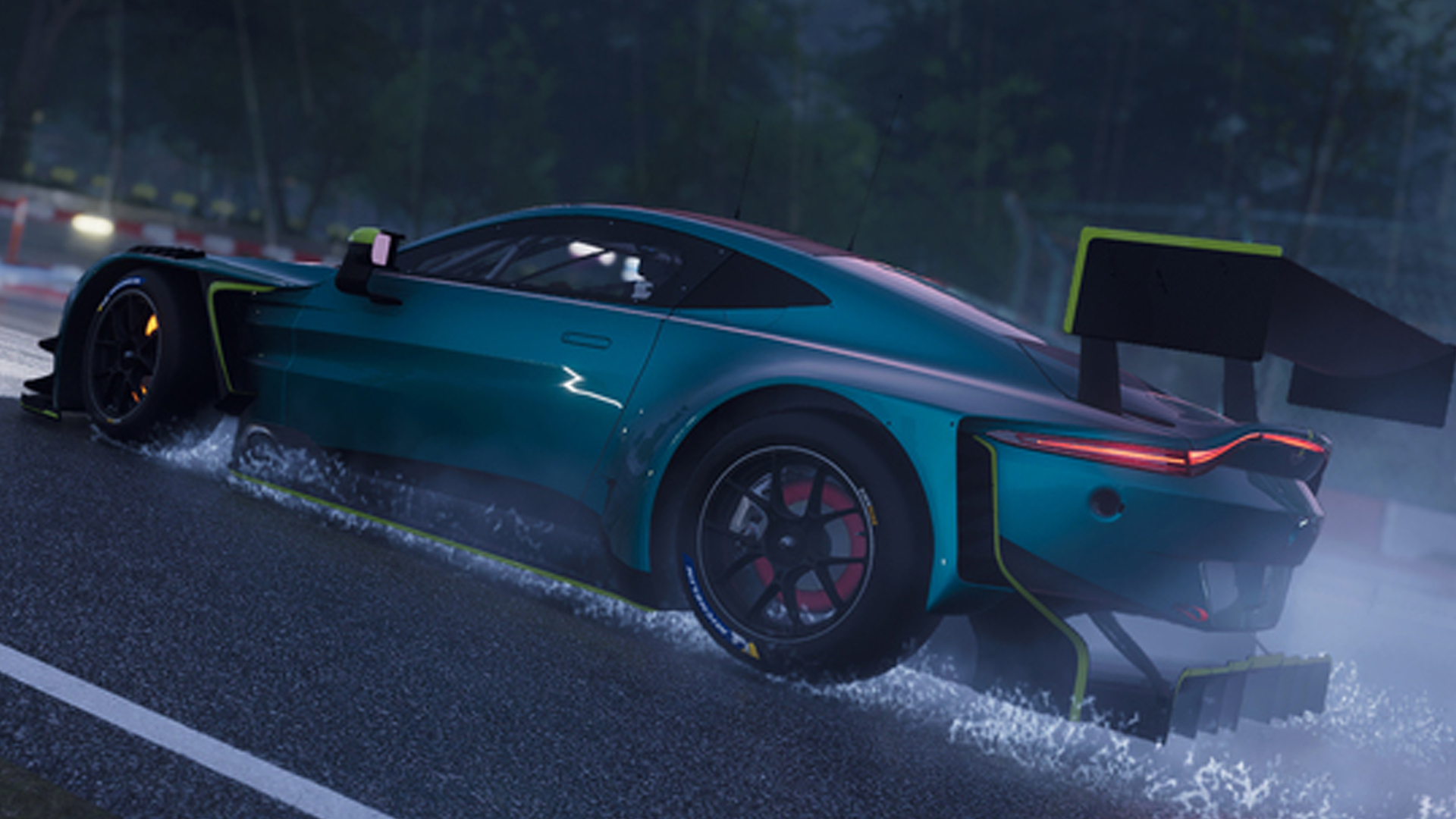
Chat with the Community
Sign Up To CommentIt's completely Free